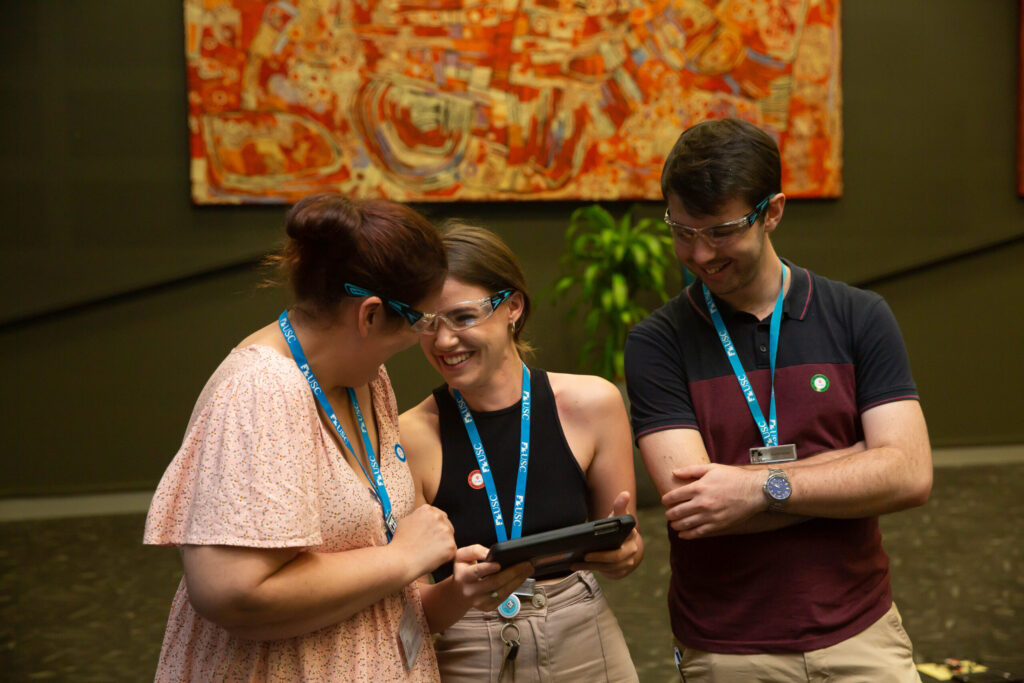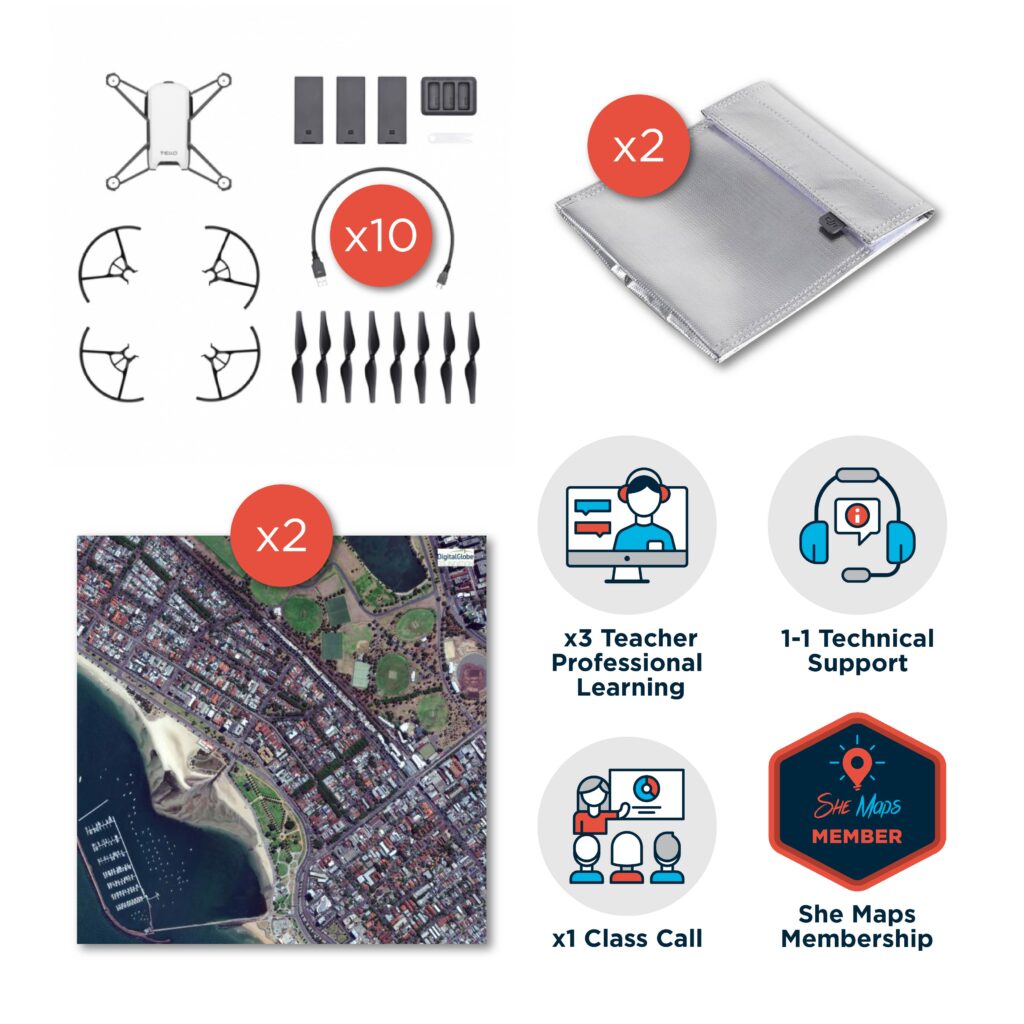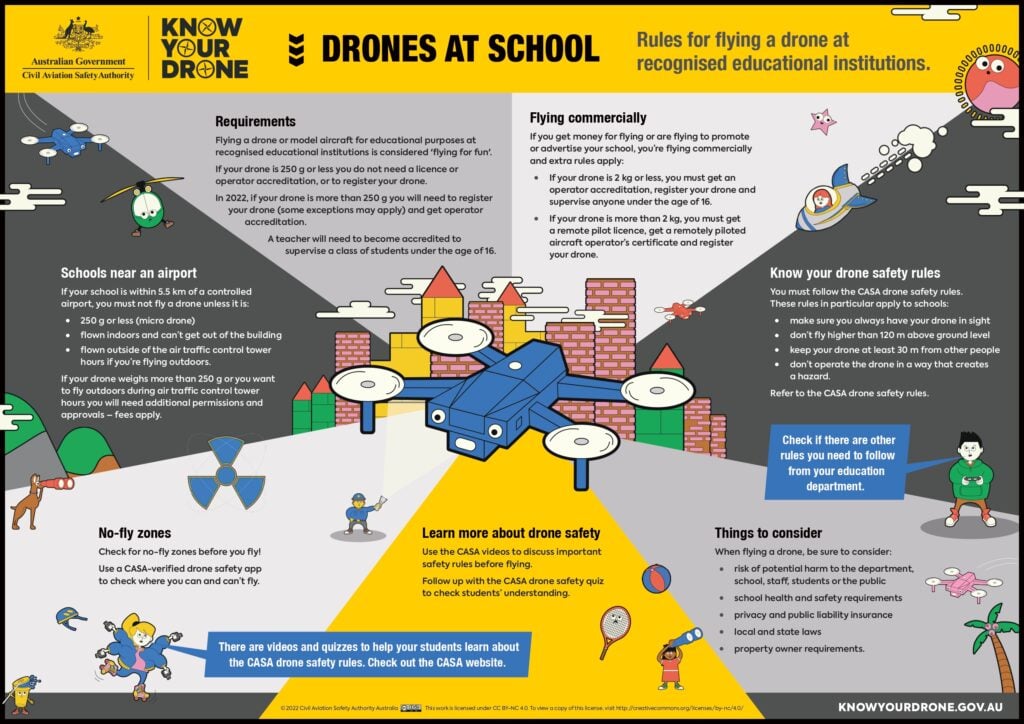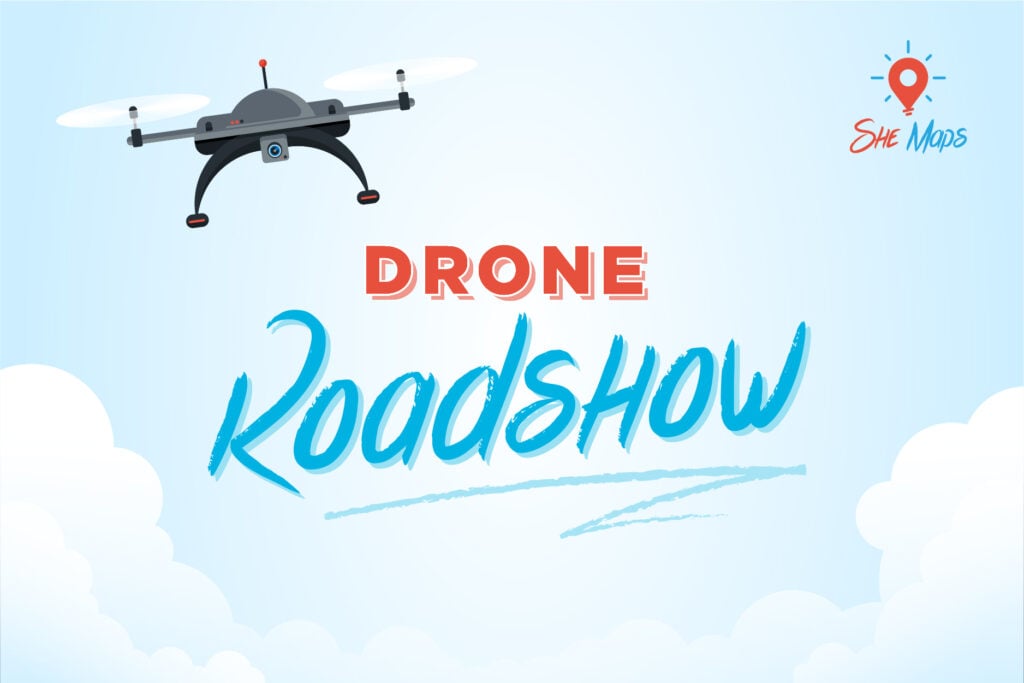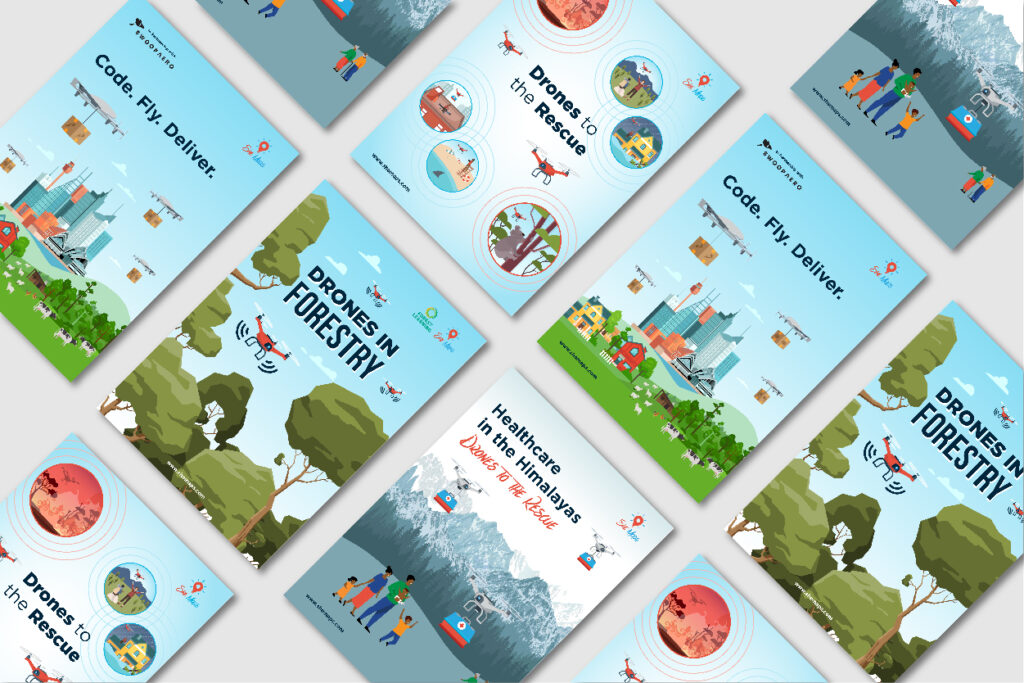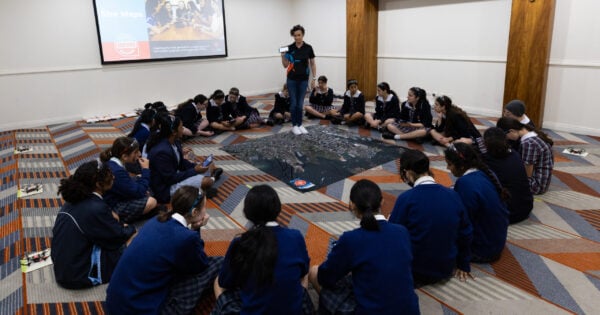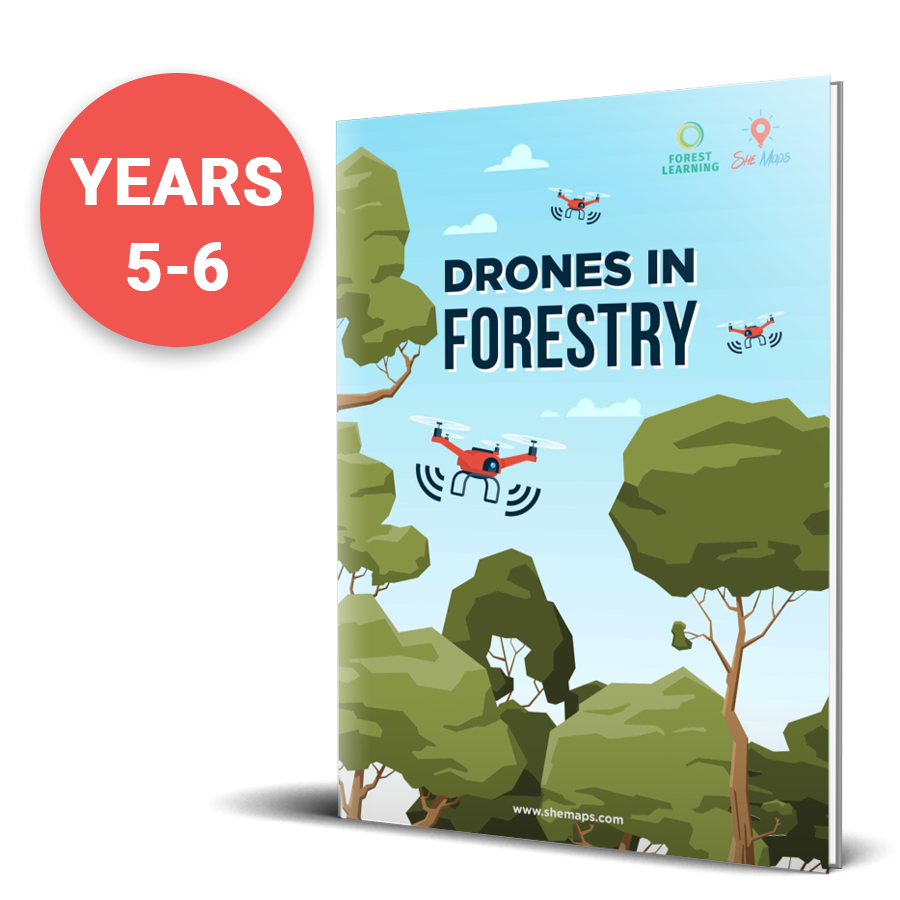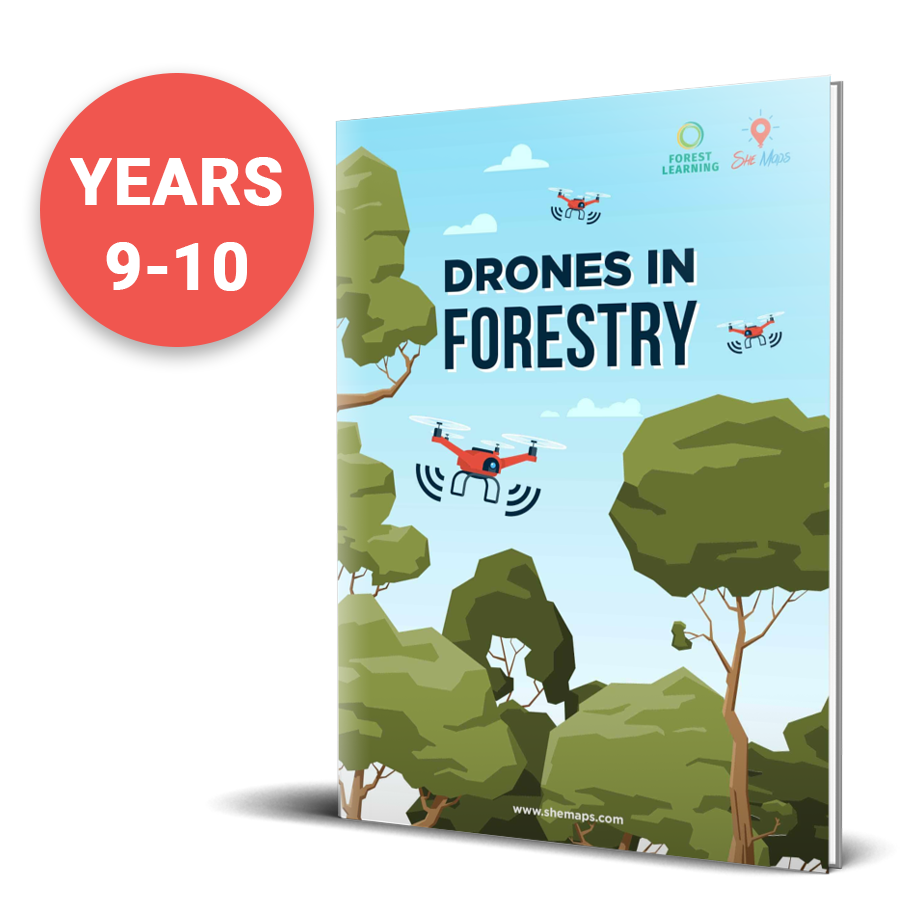Where to start with drone programs at school
Flying a drone at a school requires special attention to regulations and safety. It is important to familiarise yourself with the Civil Aviation and Safety Authority (CASA) regulations, obtain permission from the school, identify a safe flying area, choose the right drone for the job and use or develop resources that educate and encourage students to become responsible drone pilots. Take a look at the following 6 tips to help get you sorted.
1. Flying in the classroom is flying for fun
CASA has recognised that when teachers and students fly drones as part of their curriculum, it is defined as “flying for fun”. This means that there is no need for a licence or operator accreditation. Take a look at Remote Pilot License (RePL) – Do I need this certification to fly drones? Here you will find reasons why and why not teachers need a RePL and what they need to do in order to teach with drones.
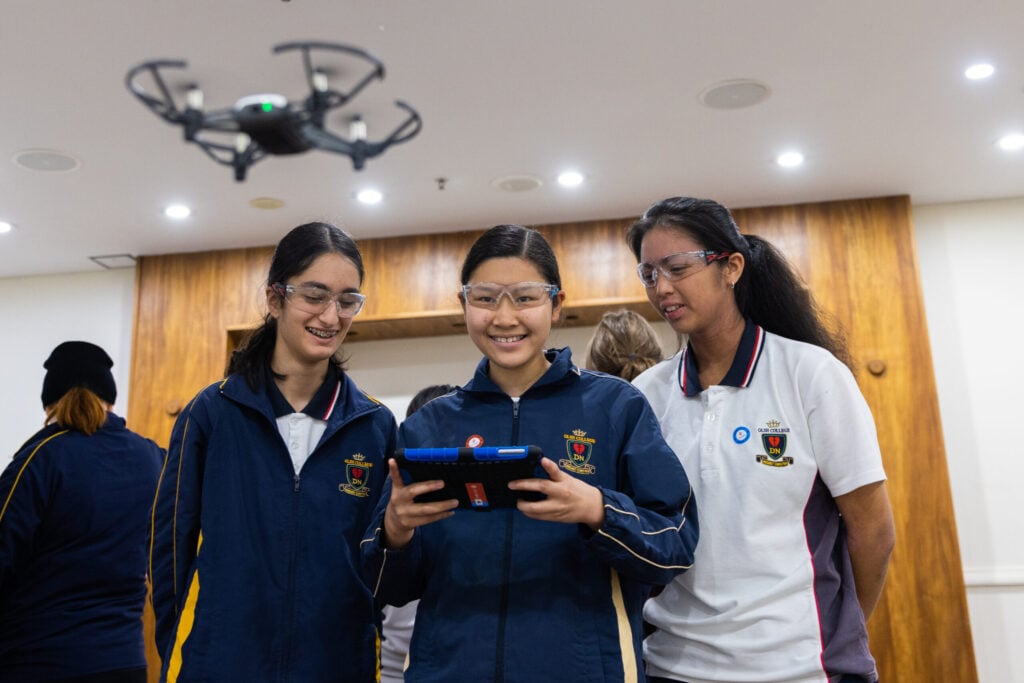
2. Making profits from drones
If you or the school are making money from flying drones, then the drone must be operated by a pilot with a Remote Pilots Licence (RePL). This includes promoting or advertising your school using a drone.
3. Choose the right drone for the students
It can be overwhelming to work out which drone works in a classroom. Luckily, we’ve done the hardwork for you. Take a look at Drones for Classrooms: 3 types that teachers should consider. You need to consider your students, your curriculum and your own professional teaching skills. A microdrone is usually the best place to start and then you can consider the bigger, and more expensive drones later down the track.
4. Understanding drone safety
There are certain drone rules that must be followed. You CAN fly your drones indoors just take a look at Can I Fly My Drones Indoors?. This will help you to understand the legal requirements of flying a drones inside your gyms, halls and classrooms. The following graphic gives you an overview of what you must consider when flying drones as part of your curriculum.
5. Professional learning for drones
Not all schools or students are allowed to fly. We encourage you to check with your education department as to whether your students have the approval to fly.
Once you have identified that you can fly in your school environment, it’s about identifying what kind of program you need. Are you looking to run a drone club as an extracurricular activity? Or do you need PL to give you the best start to a new STEM program? The Drone Roadshow is visiting 14 locations around Australia! It gives teachers working with students in Years 5 -10 the know-how to use drones and GIS technology to address real-world issues while developing skills for future STEM jobs.
6. Students can go beyond the drone
You can teach your students to fly, but have you considered how you can use drones in science or geography inquiry? What about studying digital systems in forestry? While developing flight skills, drones can also support students to understand data collection across a range of industries, including Agriculture. Even discovering the different careers that are a part of the drone industry provides inquiry opportunities.


